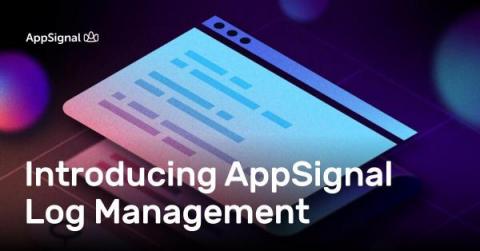Operations | Monitoring | ITSM | DevOps | Cloud
Latest News
Cloud Migration is hard especially in the public sector, but there is a way
Public Sector Predictions - the highlights for 2023 and two challenges that the public sector faces
Introducing AppSignal Logging
We're excited to announce AppSignal Log Management, a straightforward solution for ingesting and analyzing your logs. AppSignal is designed to be intuitive and help you get the most out of your application's monitoring data. Here's what you'll get with our logging solution.
SaaS Observability Platforms: A Buyer's Guide
Observability is the ability to gather data from metrics, logs, traces, and other sources, and use that data to form a complete picture of a system’s behavior, performance, and health. While monitoring alone was once the go-to approach for managing IT infrastructure, observability goes further, allowing IT teams to detect and understand unexpected or unknown events.
Monitoring Android applications with Elastic APM
People are handling more and more matters on their smartphones through mobile apps both privately and professionally. With thousands or even millions of users, ensuring great performance and reliability is a key challenge for providers and operators of mobile apps and related backend services.
3 Effective Tips for Cloud-Native Compliance
How I used Graylog to Fix my Internet Connection
In today’s digital age, the internet has become an integral part of our daily lives. From working remotely to streaming movies, we rely on the internet for almost everything. However, slow internet speeds can be frustrating and can significantly affect our productivity and entertainment. Despite advancements in technology, many people continue to face challenges with their internet speeds, hindering their ability to fully utilize the benefits of the internet.
Building Resilience With the Splunk Platform One Use Case at a Time
Centralized Log Management Best Practices and Tools
Centralized logging is a critical component of observability into modern infrastructure and applications. Without it, it can be difficult to diagnose problems and understand user journeys—leaving engineers blind to production incidents or interrupted customer experiences. Alternatively, when the right engineers can access the right log data at the right time, they can quickly gain a better understanding of how their services are performing and troubleshoot problems faster.











